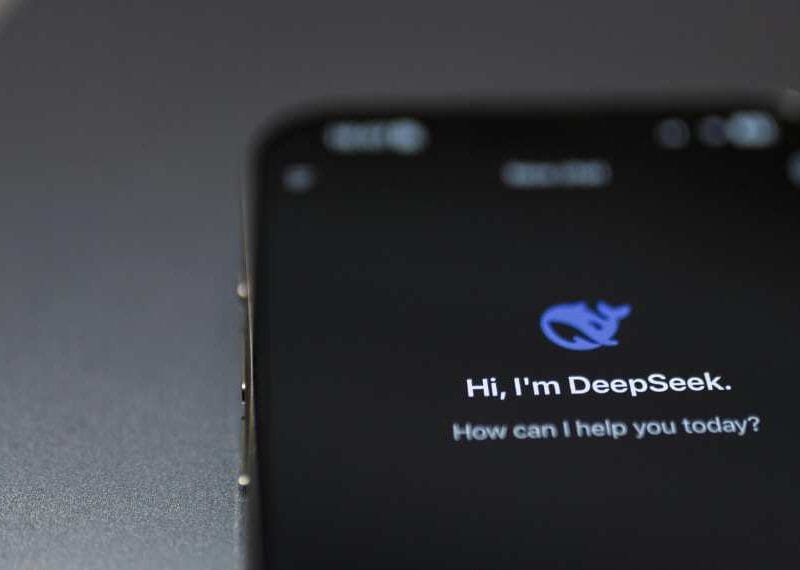From Ban to Boom: How Leaders Embraced Generative AI in Months
The rapid shift from restricting generative AI to embracing it reflects a pivotal transformation across industries.
This Techronicler article compiles insights from business leaders, thought leaders, and tech professionals on how their organizations evolved from AI skepticism to strategic integration.
Initially driven by concerns over security, accuracy, and compliance, companies like Cisco and others implemented bans or strict limits.
Competitive pressures and leadership vision spurred change, leading to AI adoption with robust guardrails, infrastructure upgrades, and human-AI collaboration.
From healthcare to SaaS, these experts reveal how structured AI use enhances efficiency, creativity, and outcomes while maintaining trust, offering a blueprint for navigating the AI revolution.
Read on!
Cisco's Swift Shift: From AI Restrictions to Enterprise AI Leadership
Cisco’s Rapid Evolution from Generative AI Restrictions to Leadership
Cisco’s transformation from restricting generative AI to leading enterprise AI adoption mirrors broader industry trends. Initially cautious, Cisco has become a pioneer in AI infrastructure, security, and platforms, driven by competitive pressures and strategic vision.
Initial Caution: A Common Enterprise Stance
The Cisco 2024 Data Privacy Benchmark Study revealed that 27% of organizations banned generative AI, while 63% limited data inputs and 61% restricted tool usage. Concerns included risks to intellectual property (69%), data leaks (68%), and inaccurate outputs (68%). Notably, 48% of organizations reported employees entering sensitive company data into AI tools, validating these fears.
Catalyst for Change: Business and Competitive Pressures
The Cisco 2024 AI Readiness Index showed 97% of organizations felt increased urgency to deploy AI, driven by leadership and competitive realities. CEO Chuck Robbins emphasized, “Companies that master AI will thrive; others will become irrelevant.”
Cisco’s Strategic AI Transformation
Infrastructure-First Approach
Cisco positioned itself as an AI infrastructure leader, developing Silicon One processors for AI’s networking demands. The company surpassed $1 billion in AI infrastructure orders for fiscal 2025, with $800 million in Q4 alone, primarily from tech giants building AI capabilities.
Comprehensive Security Solutions
To address security concerns, Cisco launched AI Defense in January 2025. This platform monitors over 750 third-party AI applications, assesses risks, and enforces unified security policies. Its AI Algorithmic Red Team technology tests billions of interactions to identify vulnerabilities proactively.
Platform Integration and AgenticOps
Cisco introduced AI Canvas, a generative AI workspace powered by its Deep Network Model, enabling collaboration across NetOps, SecOps, and DevOps. The company’s “AgenticOps” vision combines human oversight with AI-driven automation, advancing beyond traditional AIOps with autonomous agents that reason and learn.
Internal Transformation
Cisco implemented structured AI training for employees and built an internal AI platform using OpenAI APIs, integrated into its intranet. This balances security with productivity, as Robbins noted, focusing on augmenting engineers’ innovation speed rather than replacing them.
Broader Market Context
Only 13% of companies are AI-ready, per the 2024 AI Readiness Index, with 85% believing they have 18 months to deploy AI strategies. Rapid adoption is evident, with student AI usage rising from 24% to 77% between May 2024 and February 2025.
Strategic Implications
Cisco’s journey highlights graduated risk management, infrastructure transformation, human-AI collaboration, and integrated platforms. Its vision of an “Internet of Agents” foresees interconnected AI agents operating securely across organizations, positioning Cisco as a leader in the enterprise AI revolution.

Supratim Sircar
Software Engineer, Cisco
From Restriction to Integration: AI Augments Human Work
In the beginning, our approach toward generative AI was highly cautious. Like many organizations, we were concerned about accuracy, security, and the potential misuse of the technology. Strict restrictions were put in place, ensuring that no output directly influenced critical decision-making.
However, as the landscape matured and regulatory discussions gained clarity, we recognized that ignoring this shift could mean falling behind. The conversation changed from “if” we should use AI to “how” we could responsibly adopt it.
Today, the integration of generative AI is more structured. For example, within our operations team, AI assists in drafting project documentation, which is then refined by subject-matter experts to ensure precision and compliance.
Similarly, in client-facing functions, AI tools speed up proposal development, allowing teams to focus on strategy and value creation rather than repetitive tasks. This evolution has shown us that the true benefit lies not in replacing human input, but in augmenting it.
Key Tip: Begin with guardrails, pilot in low-risk areas, and scale AI adoption where human oversight ensures both efficiency and trust.

Garrett Lehman
Co-Founder, Gapp Group
Clear Guardrails Transform AI from Threat to Tool
Our initial hesitation mirrored that of many organizations, rooted in concerns about accuracy, privacy, and the risk of overreliance.
Over time, we found that limited, well-defined uses allowed us to test value without compromising standards.
For instance, generative AI now supports patient education by drafting plain-language summaries of complex medical instructions, which staff then review for accuracy. This step alone reduced the time clinicians spend on non-clinical tasks while improving clarity for patients.
The evolution has been less about embracing AI wholesale and more about establishing clear guardrails.
Each use case is piloted, measured for impact, and integrated only if it demonstrably saves time or improves communication.
The key lesson has been that generative AI is most effective when paired with human oversight. That balance turns it from a perceived threat into a practical tool that strengthens service delivery without diminishing trust.

Belle Florendo
Marketing coordinator, RGV Direct Care
Law Firm Adopts AI While Preserving Human Judgment
At first, our office treated generative AI with skepticism. Legal work demands precision, and the potential for errors made initial adoption unthinkable. We prioritized human review for every document and relied solely on proven research methods.
After observing its practical benefits, we began to explore AI in controlled ways. It now helps in preparing templates, summarizing long reports, and highlighting applicable case precedents. These tasks save time but leave our attorneys with all-important judgment and decision-making.
Integration demanded clear procedures. Every AI-drafted version goes through vigilant scrutiny, and confidential client information is safeguarded at all times. Doing it this way preserves the integrity of our work while taking advantage of AI’s efficiency.
The group soon realized that AI might be a force multiplier instead of a replacement. Training on the optimum level of productivity without loss of quality. Lawyers are now able to spend more time on strategic case planning and client interaction.
This revolution is accompanied by a wider mindset change. Caution gave way to practical adoption. AI has become a tool that enhances productivity and decision-making while preserving the standards that define our practice.

Steven Rodemer
Owner & Attorney, Criminal Defense Attorney
Staff Participation Turns AI Skepticism into Ownership
The shift began once we reframed generative AI from being a perceived threat to quality into a tool with clearly defined boundaries.
Initially, concerns centered on accuracy and the potential erosion of original thinking. Over time, we introduced guidelines that positioned AI as a support layer rather than a replacement. For example, teams now use it to generate first drafts of technical documentation, while final reviews remain firmly in human hands.
The result has been shorter turnaround times without compromising standards. What changed most was not the technology itself but the level of trust created by involving staff in setting the rules for its use.
That participation made adoption smoother and turned skepticism into a sense of ownership over how AI is integrated into daily work.

Rory Keel
Owner, Equipoise Coffee
Healthcare Supply Chain Accelerates with Controlled AI
The shift happened once we moved from viewing AI as a threat to compliance and accuracy to seeing it as a controlled support tool.
Initially, we restricted use out of concern for patient data security and the possibility of unreliable outputs. Over time, with clear guardrails and internal training, we began integrating AI into structured tasks like summarizing product specifications, drafting supply chain reports, and assisting with customer communication templates.
The most visible evolution has been efficiency.
Routine documentation that previously took hours is now prepared in minutes, with staff focusing their expertise on verification and refinement rather than repetitive drafting.
Instead of replacing decision-making, AI now acts as a first pass that accelerates workflows.
For an organization centered on healthcare supply, the balance has been adopting AI selectively, in areas where speed and clarity add value without compromising trust or compliance.

Maegan Damugo
Marketing coordinator, MacPherson’s Medical Supply
AI Adoption: From Skepticism to Success
Initially, we were highly sceptical about the use of AI.
We thought the customer uptake might be slow, that it would be too expensive, and that it would be difficult to implement.
We were wrong on all counts.
Now, we all use development tools like Claude, research tools like Chat GPT, and we’ve developed extensive AI tools for our software applications using AWS Bedrock, which turned out to be straightforward and cost-effective.
Our customers are thrilled by our abstract, extract and interrogation features, and it’s great to be so competitive in the market.

Katherine King
Co-founder & CEO, Yarris Technologies
Treat AI as a Power Tool
When generative AI first started making waves, my instinct as a CEO was to lock it down.
I worried about clients getting cookie-cutter work and our team losing its creative edge. Within a few months, though, I realized the smarter move was to treat AI like a power tool instead of a replacement. Now my team uses it to speed up the boring stuff—like structuring keyword lists or drafting a first pass of copy—so they can spend more time on strategy, storytelling, and design.
The real shift hasn’t been the tech, it’s been the mindset: once we stopped fearing AI and started shaping how we use it, productivity and creativity both jumped.”
AI Adoption Triples Content Production
At our SaaS content marketing agency, we initially resisted the use of AI. It felt like hype. However, we then began using LLMs to support client content, and it proved surprisingly effective. That wasn’t enough for us, though – we went all in and hired a Head of AI Engineering to build custom in-house workflows.
Now, AI powers almost every part of our operations. As a result, we now produce three times more content for clients without raising prices or compromising quality. We’re bullish on AI, and we’re continuing to invest resources in building internal apps and workflows that keep us ahead.

Ugljesa
Content Strategies, ContentMonk
On behalf of the Techronicler community of readers, we thank these leaders and experts for taking the time to share valuable insights that stem from years of experience and in-depth expertise in their respective niches.
If you wish to showcase your experience and expertise, participate in industry-leading discussions, and add visibility and impact to your personal brand and business, get in touch with the Techronicler team to feature in our fast-growing publication.












